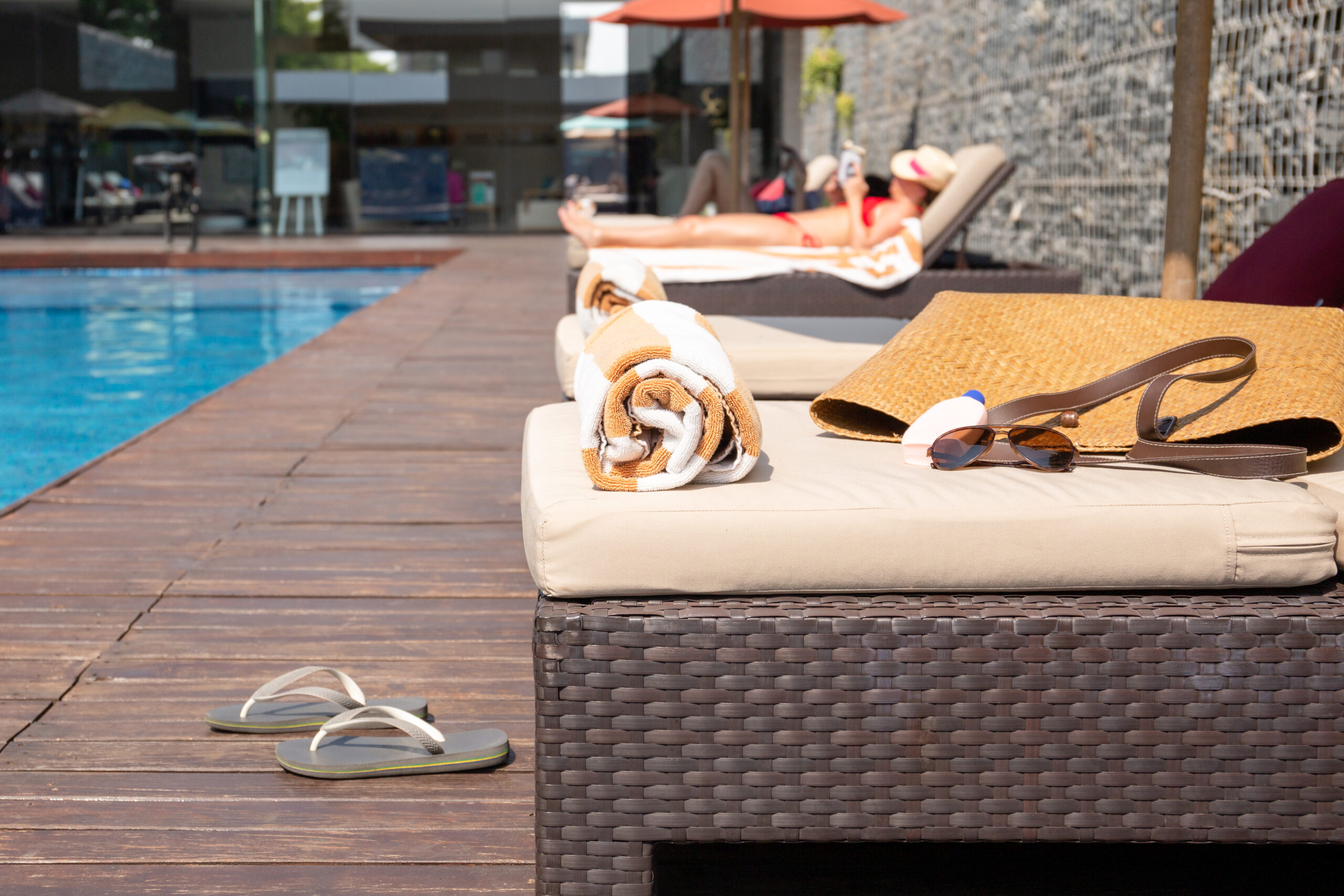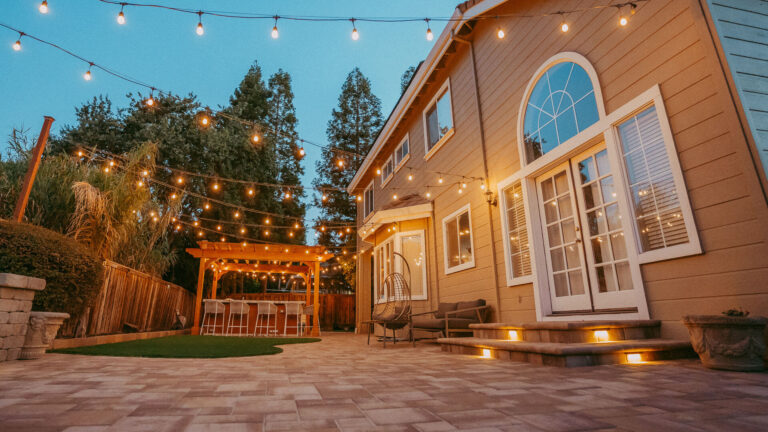Pool Deck Advantages: Top Benefits and Tips for Homeowners

A well-designed pool deck not only enhances the beauty of a backyard oasis but also offers numerous advantages to homeowners. The right pool deck can transform the entire swimming pool area into a functional, aesthetically pleasing, and safe environment for everyone to enjoy.
One of the main advantages of a pool deck is the added safety it provides. A slip-resistant surface ensures that both children and adults can safely move around without risking injury. Furthermore, the deck material can complement the overall landscape, creating a seamless transition between the pool area and the rest of the backyard.
Additionally, pool decks offer extended living space that can be utilized for various purposes such as lounging, dining, or even hosting outdoor events. By choosing the appropriate materials, homeowners can achieve a low-maintenance and durable surface that can withstand weather elements and frequent use, making it a worthwhile investment for any property with a swimming pool.
Understanding Pool Deck Materials
A well-designed pool deck not only enhances the beauty and utility of your swimming pool but also works as a safe and comfortable surface for swimmers and spectators. It’s essential to understand the various pool deck materials available to make an informed decision that suits your needs and budget. In this section, we’ll discuss some popular options and their pros and cons.
Concrete Pool Deck Pros
Concrete pool decks are a popular choice for their durability, affordability, and design flexibility. There are several ways to customize the look of concrete, such as using colored concrete, stamped concrete, or exposed aggregate. Also, the slip resistance and heat reflectiveness of concrete enhance safety.
| Pros | Cons |
|---|---|
| Durable | Requires regular maintenance |
| Affordable | Can crack over time |
| Customizable | May feel hot underfoot |
Natural Stone and Its Appeal
Natural stone offers a luxurious and sophisticated look to pool decks. Some common options include travertine, flagstone, limestone, and slate. These materials are slip-resistant, stay cool underfoot, and are exceptionally versatile in terms of color and texture.
| Pros | Cons |
|---|---|
| Aesthetically pleasing | Can be expensive |
| Slip-resistant | Installation can be labor-intensive |
| Stays cool underfoot | May require sealing to prevent staining |
Pavers and Brick Options
Pavers and bricks offer a classic and charming look for pool decks. They are available in various materials like concrete, natural stone, and clay. Pavers and bricks are durable, slip-resistant, and can easily be replaced if damaged.
| Pros | Cons |
|---|---|
| Aesthetically pleasing | Sand in joints can wash away |
| Durable | May require regular maintenance |
| Easy to replace damaged sections | Can shift over time |
Wood and Composite Decking
Wood and composite decking bring warmth and a natural feel to pool decks. Wood options include pressure-treated lumber, redwood, and tropical hardwoods, while composite materials consist of wood fibers and recycled plastics. Both options offer slip-resistance, durability, and design versatility.
| Pros | Cons |
|---|---|
| Natural look | Wood can warp, splinter, or rot |
| Customizable | Composite can be expensive |
| Slip-resistant | Requires regular maintenance |
Additional Pool Decking Options
Besides the common materials mentioned above, there are other options that homeowners can consider, such as rubber, porcelain, or ceramic tiles. Each offers its unique set of advantages and drawbacks, encompassing factors like affordability, durability, and aesthetics. It is crucial to research and compare these options carefully before making a final decision on the pool deck material.
Design and Aesthetic Considerations
Color and Texture Choices
Pool decks come in a wide variety of colors and textures, allowing homeowners to create a unique and personalized space that enhances their pool area. From bright and vibrant tones to subtle and earthy hues, there is something to suit every taste and preference.
When it comes to texture, materials like concrete, wood, and stone offer different levels of slip resistance and visual appeal. For example, stamped concrete can mimic the look of natural stone, while wooden decks can bring warmth and a timeless quality to the pool area.
Patterns and Shapes Relevance
Patterns and shapes play a significant role in the overall aesthetic and design of a pool deck. They can either complement or contrast with the surrounding landscape, pool shape, and home exterior. The use of geometric shapes, such as squares, rectangles, and circles, add a modern touch to the deck area, while irregular or organic shapes bring a sense of natural harmony.
Design considerations can also include the arrangement of pavers or tiles in unique formations, creating eye-catching patterns that add visual interest to the space.
| Pattern Types | Description |
|---|---|
| Linear | Simple and clean lines that create a well-organized and orderly appearance |
| Checkerboard | Alternating colors or materials, creating a visually striking effect |
| Herringbone | Diagonal patterns formed by rectangular pavers for added texture and movement in the design |
| Random | Organic and irregular patterns that mimic natural stone or wood arrangements, for a rustic feel |
Deck Size and Integration With Landscape
The size and layout of a pool deck should seamlessly integrate with the existing landscape and outdoor living space. A well-designed deck not only provides a functional area for poolside activities but also enhances the aesthetic appeal and overall value of the property.
Key factors to consider when planning deck size and integration with the landscape include:
- Proportion: Ensuring that the deck is in proper scale with the pool size and outdoor living space.
- Functionality: Providing adequate room for lounging, dining, and recreational activities.
- Safety: Incorporating design elements such as non-slip materials and clear pathways for easy access around the pool.
In summary, taking into account color and texture choices, patterns and shapes relevance, and deck size and integration with landscape are essential for achieving a well-rounded and visually appealing pool deck design.
Safety and Durability Factors
Traction and Slip Resistance
Pool decks are specifically designed to prioritize safety by addressing traction and slip resistance. This is particularly important considering the wet and slippery environment around pools. Deck manufacturers typically use a range of techniques to enhance slip resistance, such as adding textured surfaces or incorporating special materials like non-skid additives into deck coatings. These features ensure that both adults and children can confidently walk around the pool area without fear of slipping accidents.
Weather Resistance and Deck Longevity
Another major advantage of pool decks is their durability in terms of weather resistance. Quality pool decks are engineered to perform well under various weather conditions, from extreme heat and sunlight to harsh winter elements. This is possible through the use of specialized materials and coatings that are UV-resistant, moisture-resistant, and capable of withstanding exposure to pool chemicals. The table below highlights some of the popular materials used for pool decks and their weather resistance characteristics:
| Material | UV Resistance | Moisture Resistance | Pool Chemical Resistance |
|---|---|---|---|
| Concrete | High | High | High |
| Wood | Moderate | Moderate | Moderate |
| Composite | High | High | High |
| Pavers | High | High | High |
By correctly selecting the appropriate materials and coatings, pool deck owners are able to achieve a more durable and longer-lasting investment.
Maintenance and Repair Demands
Lastly, the maintenance and repair demands of pool decks are closely tied to the issues of safety and durability. A well-designed pool deck should require minimal maintenance to keep it in good condition and ensure its longevity. Some pool deck materials demand less maintenance work than others:
- Concrete: This material requires occasional cleaning and sealing, but it is generally a low-maintenance option.
- Wood: Wooden decks need frequent cleaning, sealing, and staining, as well as regular checks for wood rot, insect damage, and board warping.
- Composite: This is a low-maintenance option that is resistant to rot, insects, and warping. It only needs occasional cleaning and does not need sealing or staining.
- Pavers: Paver pool decks require minimal maintenance and can be easily repaired by replacing individual pavers if damaged.
Efficient maintenance and easy repair options contribute to the overall safety and durability of a pool deck by keeping it in optimal condition. With proper care and conscientious material selection, pool decks offer a practical and aesthetically pleasing addition to any backyard pool area.
Cost-Effectiveness and Installation
Initial Investment and Long-Term Value
When considering the cost of a pool deck, it’s essential to factor in both the initial investment and the long-term value it adds to your property. The price of a pool deck varies based on factors such as materials, design, and size. However, remember that a well-maintained and attractive pool deck increases property value and allure.
Common pool deck materials and their approximate costs per square foot include:
- Concrete: $6-15
- Pavers: $10-25
- Wood: $15-30
- Composite: $20-45
Considering long-term value, some materials require less maintenance and offer a longer lifespan. For example, concrete is low-maintenance and durable, while wood requires regular sealing and can be more susceptible to damage. However, budget constraints may make wood a more attractive option for some homeowners. Ultimately, it’s crucial to weigh the costs and benefits of each material to find the best fit for your specific situation.
Installation Processes and Labor
The installation process of your pool deck directly impacts the overall cost and timeline of the project. Different materials have distinct installation procedures, which affect the required labor and resources.
- Concrete: This cost-effective option generally has lower labor requirements, as the installation process is relatively straightforward. Concrete is poured and leveled; then, it’s given time to cure before sealing is applied.
- Pavers: Installing pavers is more labor-intensive, as each one must be individually set and leveled, and the ground must be appropriately prepared. However, pavers offer more flexibility in design and are easier to repair than other materials.
- Wood: Building a wooden deck entails constructing a frame, installing joists, and laying the decking boards. This process usually requires more time and labor, but it can be easier if prefabricated sections are used.
- Composite: Similar to wood, composite decks are built with a framing system, but they usually require additional support due to the material’s weight. The installation process is similar to a wooden deck, and labor costs are often comparable.
Regardless of the chosen material, hiring a professional contractor will ensure your pool deck is properly installed, contributing to its longevity and overall functionality. It is essential to obtain multiple quotes and check references to find a reliable and qualified installer.
In conclusion, the cost-effectiveness and installation process of a pool deck should always be carefully assessed based on the individual homeowner’s priorities, preferences, and budget. Pool decks can offer significant long-term value, but it’s essential to choose the right materials and engage the services of a professional installer.






